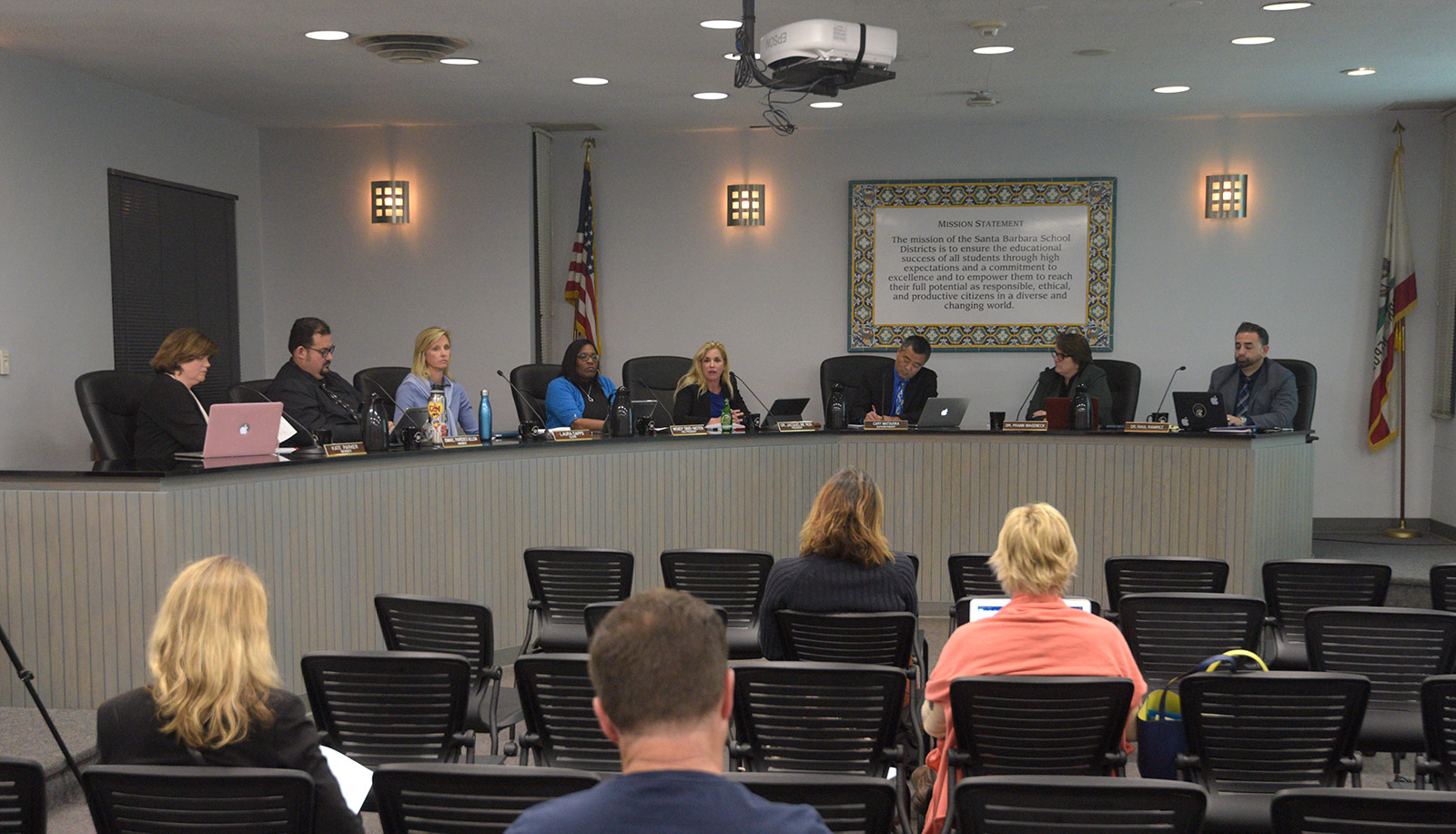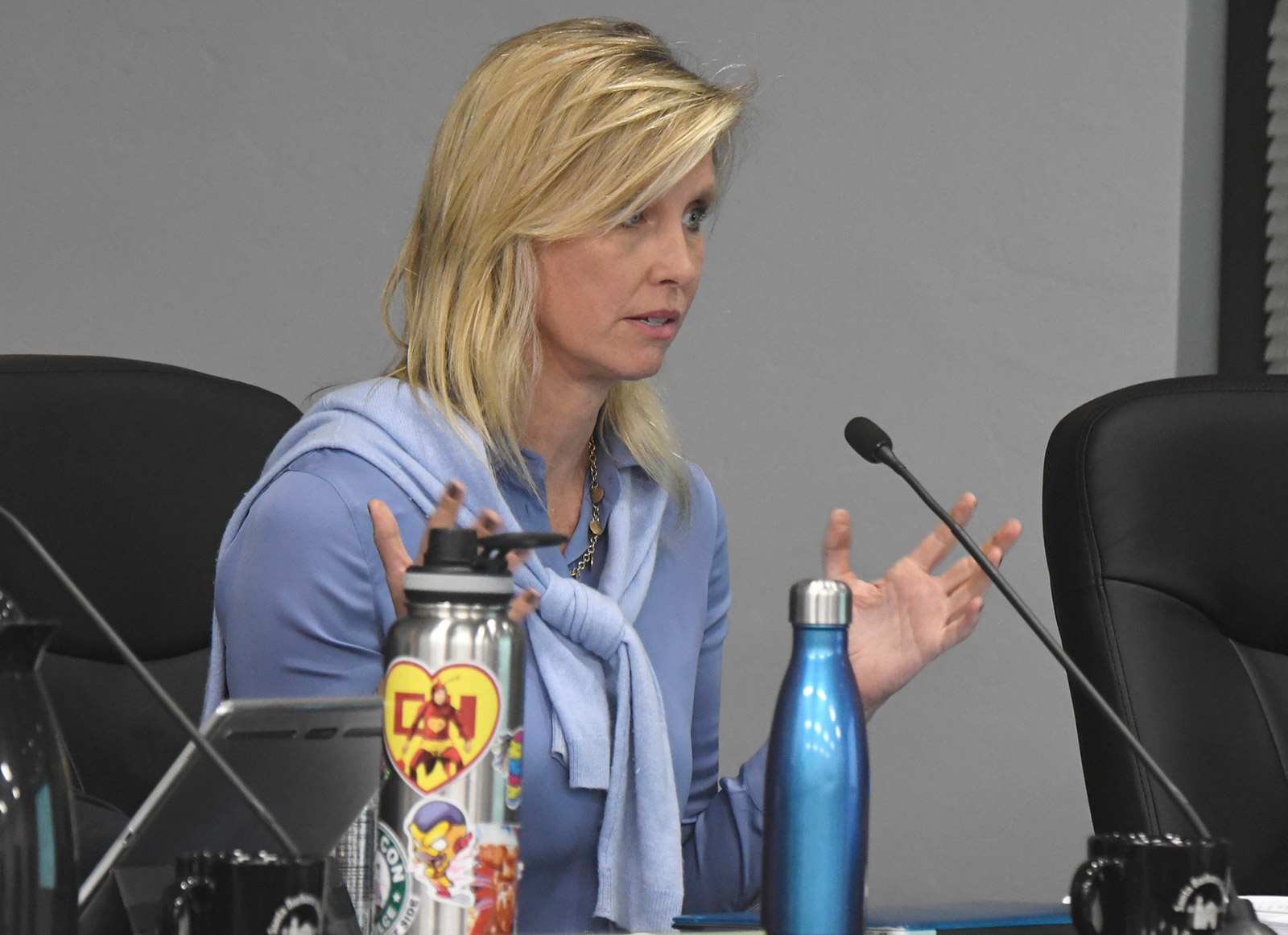
In a time when the term “active shooter” instills warranted fear throughout schools nationwide, most of the school-safety plans presented to Santa Barbara Unified School District boardmembers on Tuesday evening lacked any reference to the real-world threat of on-campus gun violence, let alone how school leaders, teachers, and students ought to respond to such life-or-death situations.
Written for the coming 2018-19 school year, the 18 safety plans — one for each campus — need approval by a board majority. But the discussion rapidly turned from the plans’ finer points to their failures in addressing a poignant fact Boardmember Laura Capps brought to the dais: Schools are the second-most common location for active-shooter situations. “We’re ahead of the curve on some things, such as wellness and [social/emotional safety],” Capps said. “But with these plans, we’re not ahead of the curve [on] active shootings. And we have those threats on a regular basis.”
Capps said terrifying thoughts cross her mind when she walks her kid into school, where his classroom is the most easily accessible from the street. Since January 19 — when San Marcos High School parents and students learned that a first-year boy had made a mock instructional video on how to kill female students, accompanied by a list of girls who ought to die — a pair of prominent school shootings have slumped the nation into mourning as mostly inflammatory debates flare up on gun control. On January 23, a 15-year-old student at Marshall County High School in Benton, Kentucky, opened fire with a handgun, killing two. On Valentine’s Day, a 19-year-old gunman killed 17 people, including 14 students, at Stoneman Douglas High School in Parkland, Florida.

Closer to home, on February 16, Santa Maria High School parents pulled their children from classes after becoming aware of a social media post of a student brandishing a handgun, with the caption, “F_ _K it!” On February 22, a Cabrillo High School bus carrying 20-30 students in Lompoc was peppered with shots from a BB or pellet gun, cracking a passenger window. Nobody was injured. The next day, deputies with the Santa Barbara County Sheriff’s Office arrested a 13-year-old Carpinteria Middle School kid who said in front of several fellow students that he was going to shoot up the school. Deputies searched the boy’s home and found no firearms, “but the threat was still made and it met the threshold for a criminal violation,” Sergeant Brad Welch said, explaining that student witnesses had “felt sustained fear [and believed] that this guy meant business.”
Santa Barbara Unified schools have not drilled for lockdown or shelter-in-place situations, said Frann Wageneck, the district’s head of Student Services. She echoed Capps’s concerns, saying the safety plans, as written, had “much room for growth.” There was also some quiet head-shaking as boardmembers learned that Goleta Valley Junior High and Dos Pueblos High School do not have intercom/public-address systems. Superintendent Cary Matsuoka said the district will remedy that issue with voter-approved bond monies stipulated for technological upgrades. “It will be handled,” he said.
[Correction, March 1: Santa Barbara Unified School District campuses do engage in lockdown and shelter-in-place drills. What the district does not currently utilize are Run-Hide-Fight drills in response to active-shooter situations. However, according to Assistant Superintendent Frann Wageneck, that will be the new protocol moving forward.]
At the speaker podium, San Marcos parent Ericka Dixon of Santa Barbara Parents for High School Safety said the group is mostly concerned with administrators putting together consistent, district-wide plans — with steady refreshers — “so that everybody is speaking the same language.” She added that in California, 22 percent of students report feeling depressed or hopeless, and those are the ones in need of the most care “so they don’t get to a place where violence is their only expression of power.”
“There’s been so much research [to inform] an exemplary plan,” said Capps. “I don’t feel comfortable just rubber-stamping these plans.”
Wageneck suggested moving forward with the vote to submit the plans to the state before deadline but amend them in the coming months, especially with the arrival later this year of a newly hired district-wide safety coordinator. “We’re looking for a person from public safety, not an educator,” she said, stressing that coming up with meaningful guidelines and practice procedures will have to include extensive consultations with law-enforcement and emergency-response personnel. Plus, she added, there will be subtler nuances to consider, such as, How do you talk about an active-shooter situation with a 1st grader?
“We don’t need to rewrite these plans before moving forward [tonight],” she said, “but there’s an urgency to it … and you absolutely have my commitment to do it.”



